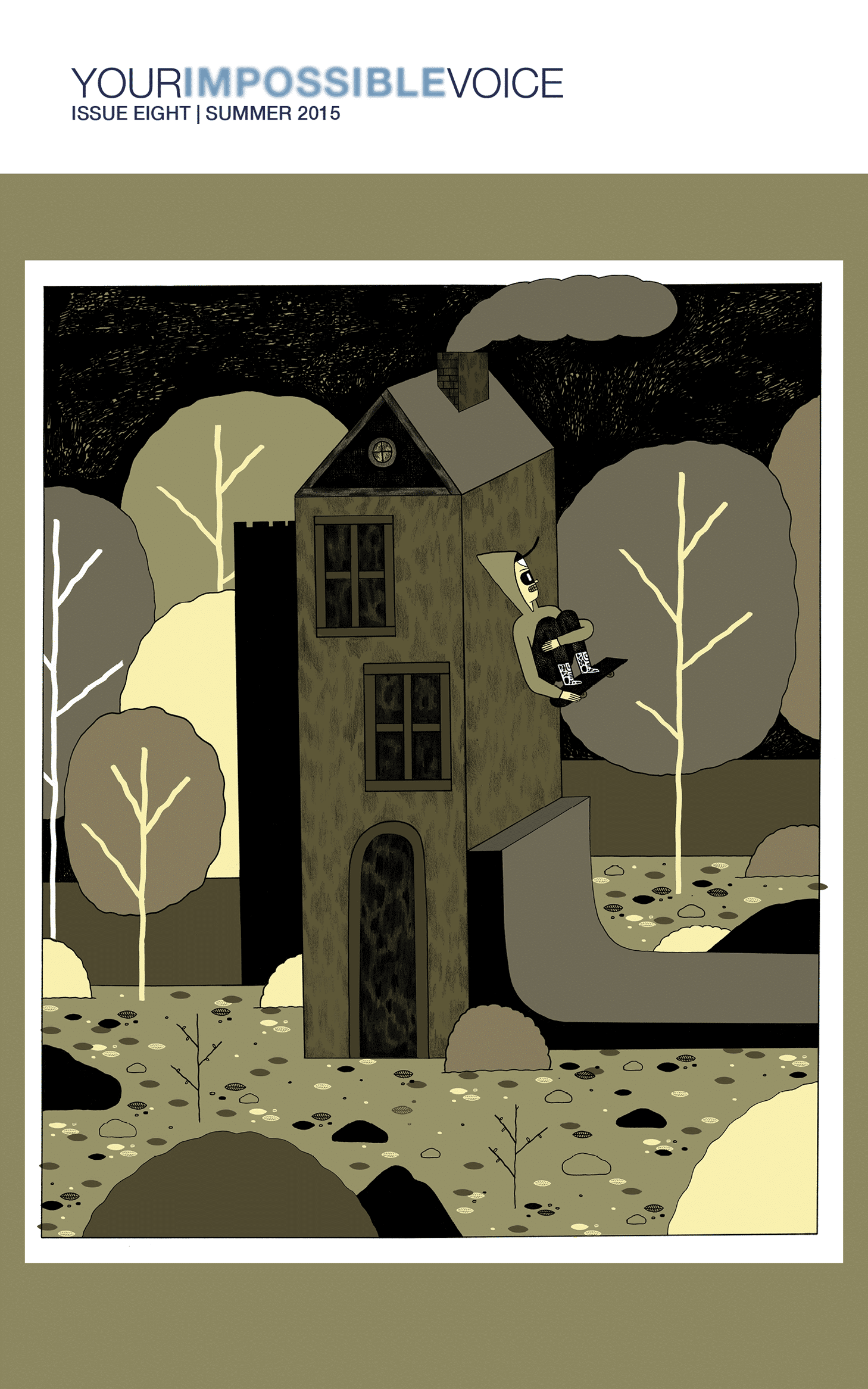By Chen Li
Translated by Ting Wang
On the wall of my study hung a copy of Pierre Bonnard’s lithograph painting The Little Laundry Girl. A teenage girl in dark green is walking aslant a wet, slippery street, supporting herself with an umbrella in her right hand and clutching a basket of dirty laundry in her left arm. The bright colors of the street along with the roadside house and stone wall accentuate the heavy aura around her, which evokes an ineffable and vague melancholy in the viewer.
In spring 1990, my student J sent me a postcard from Paris, in which he wrote:
“All has been going well since I came to France one month ago. The splendor of Paris resembles luxuriant and exuberant floral displays. It is springtime here, a season with green meadows of dreams and breezes that flow like water. Its beauty, both tangible and intangible, is such an eye-opener. They say Paris is the capital of the arts—that’s so true! I read and tour every day, learning and absorbing so much …”
Printed on the back of the postcard is none other than The Little Laundry Girl by Bonnard.
A decade prior, when J was still in high school, right in front of that lithograph painting, I introduced him and several other students to Huang Chunming, Chen Yingzhen, van Gogh and Shakespeare, and lent them my cherished private collection of works by Lu Xun and Cao Yu for them to make photocopies. As they got older, together we explored Beethoven’s Choral Symphony, Bach’s St. Matthew Passion and Six Suites for Unaccompanied Cello, Schubert’s Winter Journey, and so on. I recall on a Sunday afternoon shortly before they took the college entrance exam, I was sitting on the floor, having just recovered from an ailment. Feeling a pang of enhanced perception, I imparted to them my interpretation of Beethoven’s Piano Sonata No. 32. I led them in their travels through books and the turning and spinning phonograph records. Such edifying exposure afforded them an acquaintance with the names of certain artists and places, and imbued them with an awareness of Matisse’s Richness, Calm, and Pleasure at the Pompidou Center housing the National Museum of Modern Art, Rousseau’s The War at the Musée d’Orsay, and Bonnard’s The Little Laundry Girl at the French national library. And suddenly there they were, trodding through Paris—Matisse, Rousseau, Bonnard, Toulouse-Lautrec—whereas I am still traveling at home.
If travel, as Francis Bacon noted, is a part of education and experience, then apparently I am an ignoramus who has had little education. Like my parents, my highest academic degree involves going from the island’s east coast to the west coast by train, and then taking the train back. In summer 1990, I headed to the south side of the island on business. The train on the trunk line connecting the north and south whizzed past the dark western plains at night, racing at full-throttle towards each town before quickly leaving it behind. Those brightly lit towns, when seen from afar, are like graveyards with the hovering will-o’-the-wisp. Suddenly I was moved by those glittering lives. These towns, totally strange to me, won’t change their way of being because of my enthusiastic involvement or indifferent disengagement. They are self-sufficient towns, just like my own town—from birth to death, from desire to sorrow—and as big and as complete as any town of the world. I thought of the poem Elegy Written in a Country Churchyard by the eighteenth-century English poet Thomas Gray—in these strange towns may well rest many nameless Miltons and Cromwells.
Hence I have come to a better understanding of the true meaning of travel, knowing that as long as I have an eager yearning for the world I am moving all the time. I know that my fifty students sitting in the classroom are fifty different tour guides, pointing to fifty different cities; I know that the persons whom I come across every day on the street and at the edge of the market have inner worlds as rich as the sights and attractions across the world. Maybe I won’t be able to travel to where I can trace the temporal and spatial origin of Bonnard’s creation of that lithograph; nevertheless, I can replicate: replicate all the cities in my own city, and travel the world in my own world.
Chen Li (陳黎) was born in Hualien, Taiwan in 1954. He graduated from the English Department of National Taiwan Normal University. Regarded as “one of the most innovative and exciting poets writing in Chinese today,” he is the author of 14 books of poetry and a prolific prose writer and translator. With his wife Chang Fen-ling, he has translated into Chinese over 20 volumes of poetry, including the works of Sylvia Plath, Seamus Heaney, Pablo Neruda, Octavio Paz, Wisława Szymborska, Tomas Tranströmer and Yosano Akiko. The recipient of many awards (e.g., the National Award for Literature and Arts, the Taiwan Literature Award, the China Times Literary Award, the United Daily News Literary Award) in Taiwan, he has taught creative writing at National Dong Hwa University and is the organizer of the annual Pacific Poetry Festival in his hometown. In 2005, he was on the list of “Top Ten Contemporary Poets of Taiwan.” In 2012, he was invited to the Olympic poetry festival (Poetry Parnassus) in London as the poet representing Taiwan. In 2014, he was invited to participate in the International Writing Program at the University of Iowa.
A native Mandarin speaker, Ting Wang discovered her passion for literary translation while studying American and British literature in Mainland China. Her translations are forthcoming in Beltway Poetry Quarterly and Asymptote. She holds a Ph.D. from the School of Communication at Northwestern University, and lives and works in the Washington Metropolitan area.

